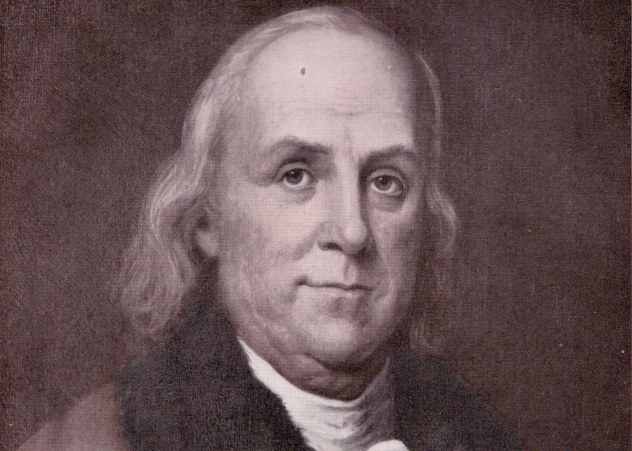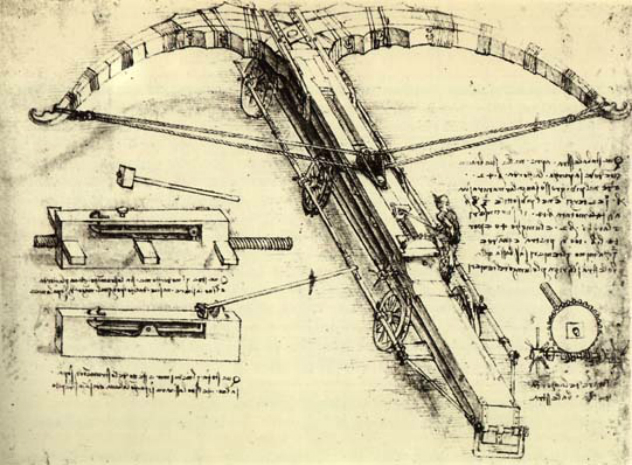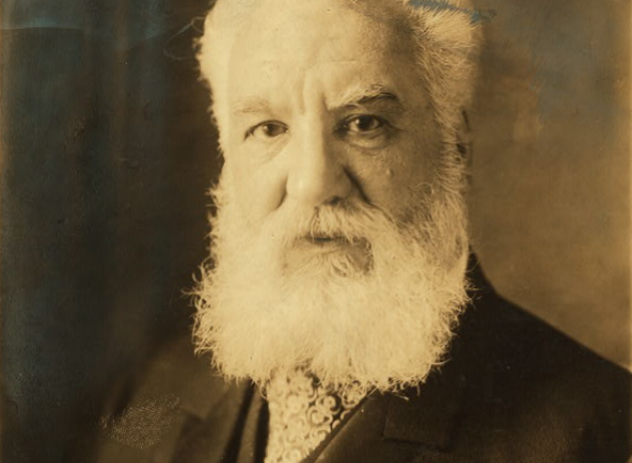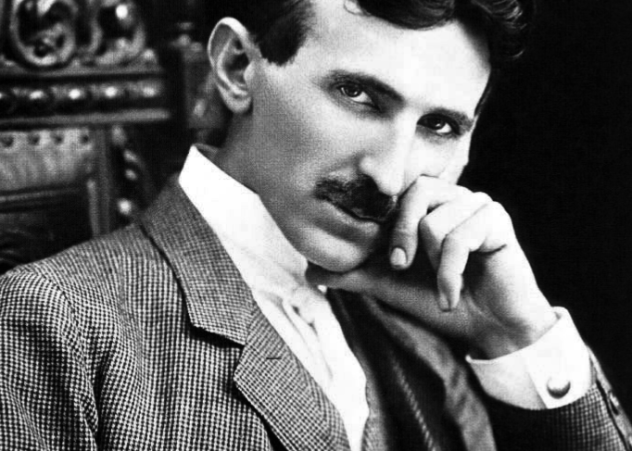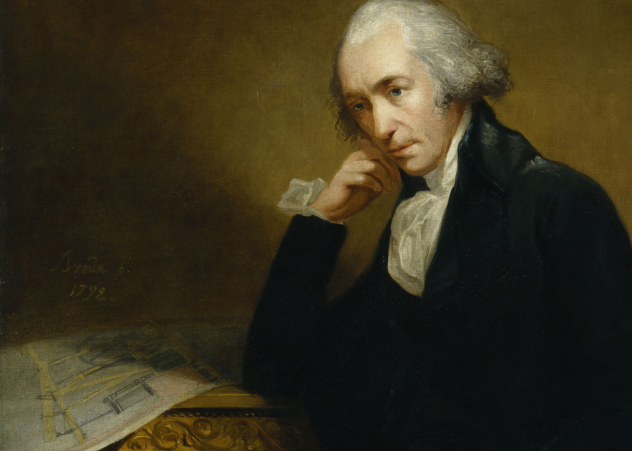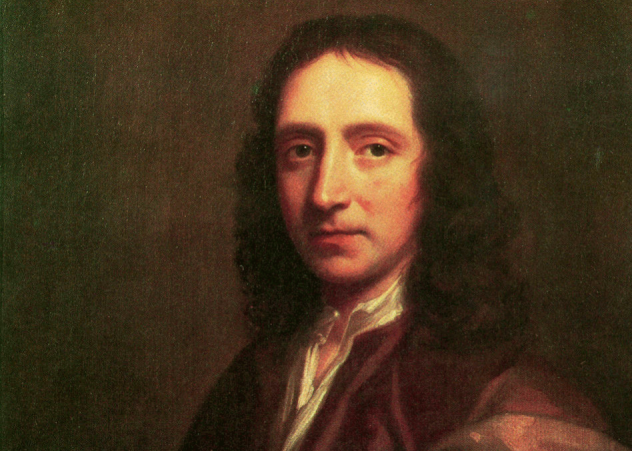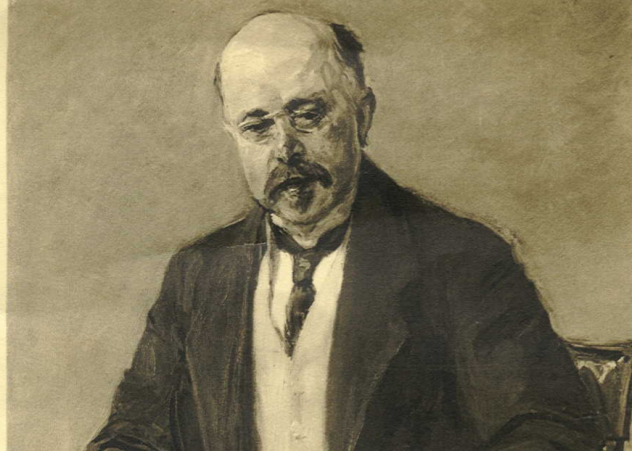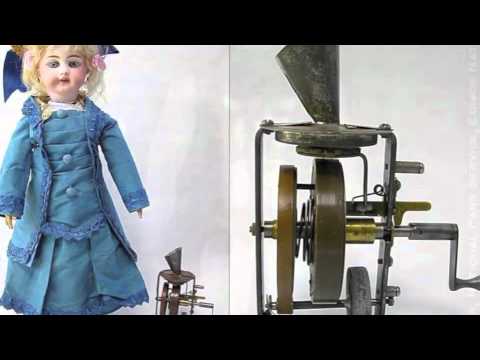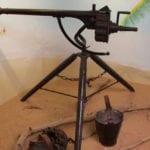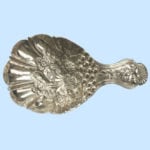10 Swim FinsBenjamin Franklin
Benjamin Franklin has a long list of accomplishments in numerous fields, so it should come as no surprise that he was an inquisitive child. In fact, he started his career as an inventor at the ripe age of 11 when he invented a pair of swim fins. Franklin was an avid swimmer and was looking for ways to improve his technique. His solution was a set of wooden fins which were worn on the hands instead of the feet. In his own words, they “resembled a painter’s pallets” at 25 centimeters (10 in) long and 15 centimeters (6 in) wide with holes for the thumbs. They didn’t make it to popular use, but according to Franklin, the swim fins were a success in the sense that they improved his speed. Unfortunately, they also fatigued his wrists. Franklin also tried wearing sandals on his feet while swimming, but these didn’t prove nearly as effective. Regardless, Benjamin Franklin remained an enthusiast of the practice all his life, which is why he was inducted into the International Swimming Hall of Fame in 1968.
9 The Giant CrossbowLeonardo Da Vinci
Leonardo da Vinci managed to garner quite a reputation as an inventor despite the fact that most of his creations never made it past the conceptual stage and were confined to drawings and plans. Some of those designs became quite iconic despite never being built. Examples include his various flying machines. Leonardo also dabbled a little in warfare. He designed a tank-like armored vehicle and a more bizarre giant crossbow. The design was similar to that of a ballista, but on a massive scale. This might have actually been one of da Vinci’s most practical inventions. The design used six wheels in order to ensure mobility. Thin wood was used for the bow itself to keep the crossbow light and flexible. The only reason the weapon was 25 meters (81 ft) across was for psychological warfare. Da Vinci considered intimidation to be a vital component of the design; the goal of the crossbow was to scare more than it was to kill. And as it turns out, it is possible to build a prototype of the giant crossbow, as proven by a Discovery Channel show in 2010.
8 The Metal DetectorAlexander Graham Bell
In addition to Alexander Graham Bell’s noteworthy accomplishment of inventing the telephone, he also created one of the very first metal detectors. His intention was to save the life of President James Garfield. On July 2, 1881, James Garfield was shot in an assassination attempt. Medical experts from all over the country lent their expertise in order to recover the bullet lodged in Garfield’s body. Most of their suggestions involved sticking something through the wound and poking around in an attempt to find the bullet. This only made things worse by spreading infection. Bell’s contribution to the effort was his suggestion to use an electromagnetic device in order to find the bullet. The detector emitted an electromagnetic field which was disturbed by the presence of metal, which in turn caused a clicking noise. It worked during tests but when it was brought near President Garfield, it started clicking all over his body. Bell took it back and fiddled with it some more. He found no fault with the device, but when he brought it back to Garfield, it clicked all over the place again. Most modern historians agree that Bell’s device didn’t work because nobody realized that the metal coils in the president’s mattress, a new innovation at the time, were interfering with the detector. Others think that Bell only checked Garfield’s right side at the insistence of physician Dr. Doctor Willard Bliss—yes, his first name really was Doctor—who claimed that’s where the bullet was and didn’t want to be proven wrong.
7 The Teleautomaton BoatNikola Tesla
Despite Tesla’s deep association with electricity, the man was also a radio pioneer in a time when the general public still considered it witchcraft. There’s no better example of this than an 1898 convention at Madison Square Garden where Tesla presented his latest creation, a small radio-controlled boat. Officially named a “teleautomaton” boat, Tesla’s design was intended to showcase his new patent, a “method of and apparatus for controlling mechanism of moving vessels and vehicles.” It had a tiny rudder, a tiny propeller, and two antennas. Tesla was able to control the boat in front of a bewildered crowd. The people were amazed by what they were seeing. Despite Tesla’s efforts to explain scientifically what was going on, the general consensus of the crowd was that Tesla was controlling the boat using telepathy. Others put forward slightly more plausible theories, such as a trained monkey secretly piloting the boat. Ever the visionary, Tesla immediately saw the possible use of the teleautomaton boat as a weapon. He planned to develop a submersible version of the boat and sell the patent to the government. However, nobody else seemed to share Tesla’s vision. According to him, the Washington official he met with “burst out with laughter” when presented with the idea of armed, radio-controlled vehicles.
6 The CopierJames Watt
James Watt’s name is strongly linked with one thing: the steam engine. However, as one of the people who kicked off the industrial revolution, his lifetime’s efforts were not limited to just one accomplishment. In fact, James Watt spent most of his life inventing. Like many other inventors, Watt’s talent and vision were not complemented with a savvy business sense. He spent most of his life in debt, struggling to find new financiers. One of Watt’s noteworthy contributions was a copying press. In 1780, he invented a device which was able to copy documents by pressing them onto a thin strip of paper, creating a reversed copy from the back. It was small, simple, and portable, and the principle behind it stayed in use up until the appearance of the modern photocopiers we use today. The copier was a success, selling over 600 units in the first year. It also marked a turning point in Watt’s professional life, as he finally started making money from his work.
5 Soda WaterJoseph Priestley
Joseph Priestley was a renowned theologian, philosopher, and chemist. His crowning achievement came when he discovered oxygen, but he also discovered other gases—or “airs,” as he called them. Later in life, he became somewhat isolated by the scientific community because he fervently defended the existence of “phlogiston,” the fifth element, at a time when the theory was obsolete. But before all of this Priestley gave us another thing which most of us still enjoy on a regular basis: soda water. This happened while Priestley was living next to a brewery and would often perform experiments there. On one occasion, he discovered his method of infusing water with carbon dioxide by suspending a bowl of water above a beer vat which was fermenting. He then discovered that the water gained a pleasant, acidic taste. At first, Priestley only kept the fizzy drink for himself and his friends, but he came up with the theory that this new concoction might be used to treat scurvy. The theory was incorrect, but we all benefit from it anyway. In 1772, he published clear instructions for creating soda water in a paper called Directions for Impregnating Water with Fixed Air. Priestley never sought to further research or monetize his discovery. This left Johann Jacob Schweppe to devise a commercially viable method of manufacturing carbonated water. He then founded the Schweppes Company in 1783, which still exists today and has made a fortune.
4 The Bouillon CubeJustus Von Liebig
Now regarded as one of the greatest chemists of the 19th century, Justus von Liebig is one of the founders of organic chemistry. When he wasn’t busy with that, he also revolutionized agriculture by identifying nitrogen as an essential nutrient for crops, thus kickstarting the fertilizer industry. And, when he wasn’t doing that, he invented the bouillon cube. After reportedly noticing that leather makers used just the hides of cattle and let the meat go to waste and rot, an engineer named George Christian Giebert who was working in South America recalled that Liebig had already developed a method to process the meat and was looking for an opportunity to start a new business. That’s how the Liebig’s Extract of Meat Company was born in 1864. Liebig’s intentions were quite noble. When he originally developed the formula in 1847, he made it public with the hope that someone would refine the process, reduce the cost, and make meat extract a viable alternative to feed the poor. However, when Liebig started his own company, others also started to sell their own versions of “meat teas” and referred to their own products as Liebig’s Extract of Meat. Eventually, Liebig had to change his brand to LEMCO and later to Oxo cubes, which are still available at grocery stores today.
3 The Life TableEdmond Halley
Edmond Halley was a renowned astronomer, physicist, and mathematician who is primarily remembered today for calculating the arrival of the famous comet that shares his name. What is often forgotten is his outstanding work in actuarial science. Halley revolutionized the study of demographics by coming up with the first life table based on accurate demographic data. It’s not entirely known how, but in 1693 Halley had obtained or simply received unrequested demographic data for the city of Breslau, now the Polish city of Wroclaw. The document contained all the deaths and births registered in the city over a five-year period. Using this information, Halley came up with a life table that showed the probability of death for each respective age group. Halley’s table became an essential part of calculating life annuities from then on. To be fair, Halley’s work was preempted by another life table created 30 years prior by John Gaunt and William Pett. However, this table was a lot less accurate and involved a lot of guesswork. It was based on London, a city with a large migratory and expanding population at the time. It was also made using London’s bills of mortality, records that didn’t specify age at the time of death. Halley had access to a relatively stable population, which provided better data.
2 The Electric PianoWalther Nernst
Walther Nernst was primarily known for his work in chemistry, including the third law of thermodynamics, which earned him the Nobel Prize in Chemistry in 1920. However, in 1930 he teamed up with two companies, Bechstein and Siemens, to create something completely different—the Neo-Bechstein-Flugel, aka the first electric piano. This piano had no sounding board and used very thin strings and a small hammer to create music. The Neo-Bechstein-Flugel digital grand piano came at a time when radio was the hot new thing. It wasn’t unusual for it to be incorporated in all of the new appliances around the house. The Neo-Bechstein also had a radio receiver and a record player built in, and the three components could be operated together or individually. Despite featuring cutting edge technology, the Neo-Bechstein was still cheaper than a standard piano. Even with all of its features, the Neo-Bechstein-Flugel piano was a flop. It didn’t receive the ringing endorsements its inventors hoped for from professional pianists. This in addition to Bechstein’s financial problems meant that Nernst’s piano was soon off the market, although the principles behind it are still found today in electric guitars and electromagnetic pick-ups.
1 The Talking DollThomas Edison
Edison is regarded not only as a talented inventor, but also a skilled businessman. As opposed to many other inventors, Edison made a fortune off his creations because he knew how to find a lucrative market for the products. That is how this little abomination came to be. Thomas Edison’s phonograph was a big hit, so he naturally tried to stick one wherever possible. The result was the Edison phonograph doll. Talking dolls are creepy, plain and simple. Even modern dolls can be terrifying when their batteries run low and they start speaking out of nowhere in a slow, demonic voice. You can imagine how disturbing a 120-year-old doll could be, but you can also see for yourself! To be fair, not all of Edison’s dolls sounded like someone speaking from the beyond. In fact, just a few years ago, a 123-year-old metal record for a doll was discovered in relatively good condition. Each record was unique. Since there was no method of mass duplicating sound recordings yet, Edison hired women to recite “Twinkle, Twinkle, Little Star” for each individual record. Despite Edison’s best efforts, the dolls were a failure and were only sold for a few weeks in 1890. Insert shameless Twitter plug here.
